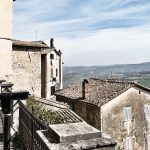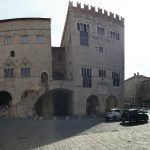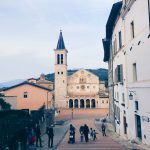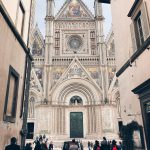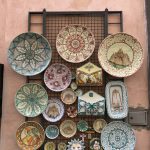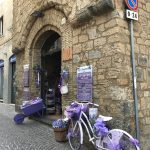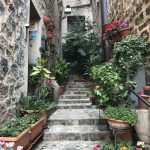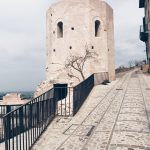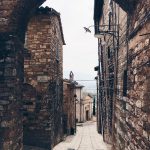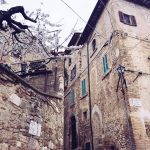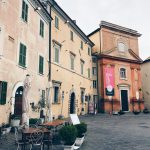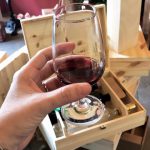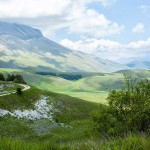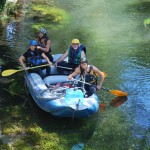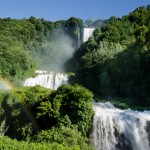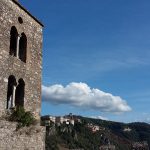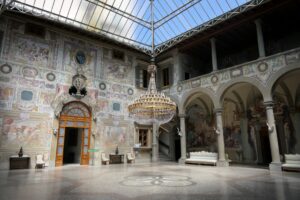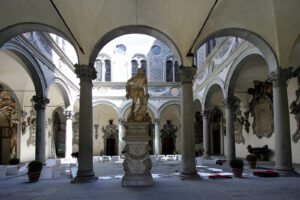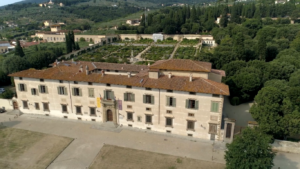A green, lush and gentle region
Weekend in Umbria
Discovering the green heart of Italy
by Chiara Assi
We all react to adversity in a different way: there are those who easily despair, those who find comfort in prayer, those who try and pretend that nothing has happened. If Umbria were a person, it would be the pragmatic member of the team, the one cracking jokes to make everyone smile, the one taking little time to mourn because there are bigger, better things ahead than any we leave behind.
After the earthquakes that shook Central Italy in the second half of 2016, we have all heard the media endlessly going on about how the entire area had been wiped out, never to look the same again. Truth is, Umbria was only marginally hit by the quakes and the region looks as stunningly beautiful as it did before: green and gorgeous, it is an amazing destination that literally left me in awe with its timeless elegance, rich history, boisterous people and delectable food. I was there for a weekend jam-packed with activities and fun and, now that I’m home, I’m already dreaming of my next trip there because yes, Umbria is that great.
The main hub in the region is Perugia, a college town with a lively downtown area, and very pretty views of the countryside around it: if there is one thing that Umbria doesn’t lack is greenery, and you will notice so as soon as you get there. The whole region is a galore of rolling hills, vineyards and woods, dotted with picture-perfect medieval towns and villages – a landscape so inviting one immediately falls in love with it. Not far from Perugia, Todi is an ancient comune perched on top of a hill and reachable with a funicular: its main square, Piazza del Popolo, is a darling piazza, open and sunny, perfect to enjoy breakfast al fresco.
- Todi cover pic
- Todi Square, pic by Chiara Assi
- Spoleto, pic by Chiara Assi
Further to the west, near the border with Lazio, Orvieto literally stole my heart and left me saying “wow” a countless amount of times. The medieval town itself is handsome enough and the stores, along the alleys, are all so quirky and unique one would want to stop in each and every one of them. But the real stunner, here is the Duomo: you see it all of the sudden and when you do, you simply aren’t ready for its majestic and imposing beauty. The church is so tall it’s hard to fit it into a photo, and its interior, rich with marble and incredible detail, is almost too beautiful for words: a true masterpiece of religious architecture. And speaking of beautiful towns, Spoleto, famous for its jazz festival, is also worth a visit, especially right before sunset, when the evening light gives it an even more fascinating glow.
- Orvieto, pic by Chiara Assi
- Orvieto Shops, pic by Chiara Assi
- Orvieto Shops, pic by Chiara Assi
Umbria also has a lot to offer to those who enjoy nature: nicknamed “the green heart of Italy”, the region is lush and unspoiled, ideal for those who love to travel on long stretches of road in the middle of nowhere, surrounded by a fantastic silence only interrupted by birds chirping in the distance. Don’t miss the opportunity to see the Cascate della Marmora, in the province of Terni, the tallest man made waterfalls in Europe: created by the ancient Romans, they are 165 meters (541 feet) tall and they are worth the brief walk up to the observatory. Deafened by the roar of the water, one feels, at the same time, very tiny and yet one with nature.
Back to the province of Perugia, I especially enjoyed visiting two of the most photogenic villages I’ve ever seen: Montefalco and Spello. If you are an avid photographer and Instagram fanatic like I am, here you will literally be in heaven, as every corner, every alley, every door in town is picture perfect and picture worthy. Montefalco, a medieval gem with great views, is renowned for producing the delicious Montefalco Rosso and Sagrantino, two red wines that go together well with the robust local cuisine.
- Spello, pic by Chiara Assi
- Spello, pic by Chiara Assi
- Spello, pic by Chiara Assi
There are several wine stores in town, all of which offer free wine tastings, no matter the time of the day. And yes, the wine is so good, it’s worth trying it even if it’s 10 a.m.! Spello, an ancient walled beauty not far from Foligno, is a place where one can walk fro hours: not because it’s large – it really isn’t – but because its simple beauty invites you to slow down and savor the moment without rushing. While wandering through its alleys you will probably wonder if absolutely everyone in town has a green thumb: every window and every street are embellished by hundreds of flowers and plants which add charm to this already impossibly charming village.
- Montefalco, pic by Chiara Assi
- Montefalco, pic by Chiara Assi
- Montefalco, red wine, pic by Chiara Assi
And, of course, Umbria is also a land of delicious food that might not be the lightest, but who cares if something is diet friendly when it tastes to good? Here carnivores will be in heaven, as the region is famous for its juicy steaks and for porchetta, a pork roast unlike any other you have tried elsewhere, but also for prosciutto, salame and all kinds of cold cuts and cheeses. Fresh pasta with meat and venison sauces, too, is a Umbrian staple, all washed down by strong wine, both red and white. At the end of a meal, cantucci with vin santo will sweeten up your palate, giving you just the right amount of energy to keep exploring this generous, wonderful and downright amazing region.
- Umbria, Food. Pic by Chiara Assi
- Umbria, Food. Pic by Chiara Assi
- Umbria, Food. Pic by Chiara Assi
Chiara Assi
italoamericano.org
Visit Perugia: helpful hints
Arrivals
There is an international airport in Perugia, connected to the centre of the city by a bus line (tickest 2,5€ – or 3,5€ if you buy it on board-). For transcontinental flights you have to stop in other airports and get to Perugia either by train or by car.
Transports
The best way to visit Perugia is by walking, but if you are interested in using the public transports check the Busitalia website. If you reach the city by car or by train, you can climb up to the city centre – which is located quite high! – using some free escalators leading straight inside the Rocca Paolina. Leave your car in one of the big parking places ‘downstairs’ (ask for some special parking rates to your hotel, they often offer some discounts!).
What to do
Perugia is the capital city of Umbria region, in the very heart of Italy. Go sightseeing in the city centre, it is famous for the defensive wall all around, the great Rocca Paolina and Palazzo Priori that contains a very important collection of works of Umbrian art.
If you love chocolate, Perugia is the hometown of the famous chocolate factory Perugina, where you can also take some nice class at the “school of chocolate” and then sleep in the Choco Hotel. Consider also a tour through the charming villages near Perugia, we recommend you to visit Agello, Bettona and Spello!


